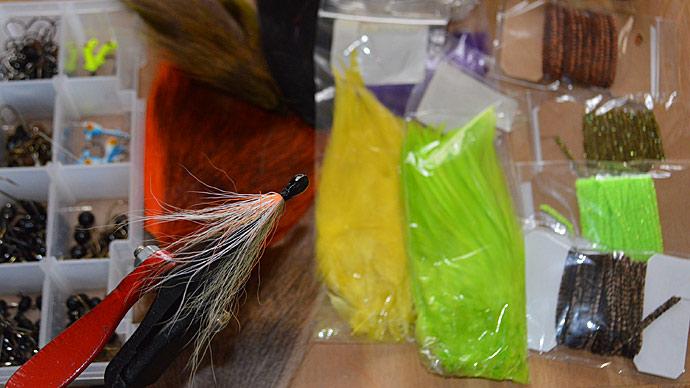
Hair jigs are considered an old-school essential bait and are almost forgotten. Everyone has seen them, and yet few use them. The first time I saw one, I thought it was for salt-water use, crappie, or other species; but it’s an unbelievable bass bait – especially under super tough conditions.
There are three primary conditions when hair jigs shine:
1. Cold water and I’m talking relative cold water. In New Jersey, cold water is considered thirty to fifty degrees, but “cold water” is fifty to sixty degrees in Florida. So it’s not just a northern bait. Use hair jigs when it’s brutal and cold in your area.
2. Pressured waters. We have a lake in New Jersey called Greenwood Lake that’s only 2,000 acres in size. I remember being in “tournies” that would have 250 boats on that lake – crazy pressure. The traditional baits failed due to the heavy pressure, but hair jigs saved the day for me.
3. Super clear water. I’m talking visibility of two feet or greater, all the way to gin clear water. In Lake Erie, you can see the bottom in twenty feet of water. Bass will shun many lures, but this is a perfect situation for hair jigs.
Hair jigs have a natural, neutral action, and this is key. They won’t freak fish. You don’t want a lot of action in these conditions.
A lot of the newer baits often have a pronounced action or sound, like the wobble of a crank-bait or the thump of big plastics. But here, you’re bucking the trend. Instead of lots of action, you’re doing the opposite.
Not many of them have a lot of action: crawfish, minnows, leaches, and larvae. They move very slowly and naturally, which these baits mimic.
I’ve fished many a tournament in cold-water conditions. In New Jersey, we have what we call winter leagues. These are small thirty to fifty boat tournaments when the water is in the forties. I fished many of these tournaments where I didn’t do well.
After one tournament, I noticed that the fish had regurgitated larvae in the live-well, literally larvae of small bugs and insects. And it shocked me. I couldn’t believe it! But when you think about it, it makes sense. The fish’s metabolism is slow, and they hug the bottom, where these slow-moving larvae are.
So I bought a bunch of black and brown hair jigs that matched the color of the larvae in my live-well and just slew them due to that neutral action.
Let’s talk color. The general rule for hair jig colors is “match the hatch.” There are five colors I use:
Black – this represents larvae, crawfish, and leeches.
Brown – this matches larvae and crawfish.
White – it mimics baitfish, shad, herring, and minnows.
Chartreuse w/red – perfect if perch and bluegill are the primary forage.
Smoky gray – it’s an all-around baitfish imitator.
For sizes, I’ll use from a 1/16th ounce up to 3/8th ounce, with 1/8th, 3/16th, and ¼ ounce being my primary sizes. When choosing which one to use, I always try to pick the heavyweight to maintain bottom contact, even when not fishing it on the bottom. So I’ll use 1/16th and 1/8th ounce weights on calm or shallow water and heavier weights on windy days or deeper water.
When it comes to materials, there are all types: marabou, deer hair, synthetic, and even some odd ones like bear hair. A good tip is to try different types and see what you like. I like marabou the most.
Because the weights are so light, I’ll use a spinning outfit ninety percent of the time. I use a seven-foot, medium-action rod paired with a twenty- or thirty-size reel spooled with fluorocarbon. A fluorocarbon line is critical with hair jigs because it sinks. The sinking line gives a hair jig a more natural presentation. And that’s critical in tough conditions.
When you’re fishing a hair jig, you need to put the bait where the fish are and where they’re feeding on that forage. Those fish were literally on the bottom in those winter tournaments, right on the bottom. Those fish I caught had mud on their belly when I brought them in the boat, so I dragged the jig on the bottom – not hopped, dragged it.
In crystal clear water in summer, when the bass are suspended and feeding on balls of baitfish, everyone is fishing a top-water lure or jerk-bait. This is when a white 3/16th jig will shine. Just pump it up and down through the school while reeling it in, and you’ll hammer them.
So think about where the fish are and how they’re feeding, and then place your jig there.
Hair jigs are not something to use once every five years. It’s something you use all the time. They shouldn’t be shoveled away deep in your tackle box. Keep them nearby and ready to use.
A hair jig is a dynamite under really tough conditions. That’s when it shines. That’s when I take them out and use them a lot.




